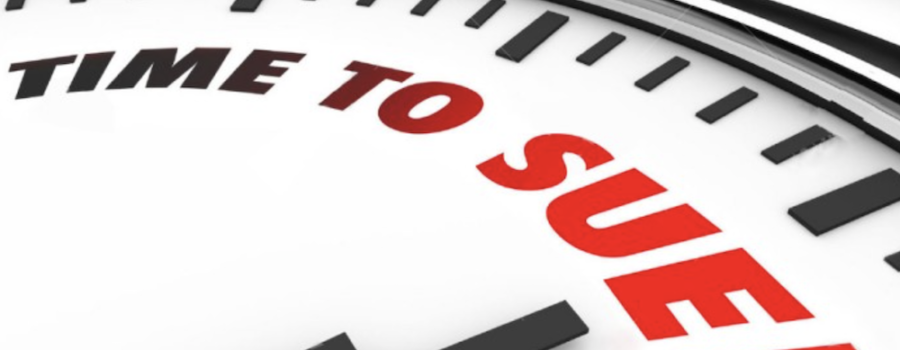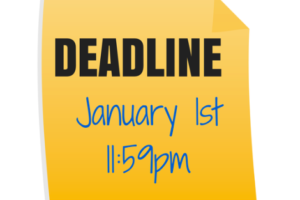New York Governor Tolls Statute of Limitations Again
New York Governor Cuomo has been issuing a lot of Executive Orders this year because of the Coronavirus Pandemic. One of the more important ones for aggrieved parties and their attorneys involves statutes of limitations. The time that a complainant has to commence a lawsuit before it is barred is called a statute of limitations. During the Coronavirus Pandemic, states like New York have temporarily stopped (or tolled) statutes of limitations from running. This has been done in a series of Executive Orders by the Governor.
It has been difficult, however, to follow the Governor’s tolling of statutes of limitations in those hodge podge of Executive Orders. There has been little news about it and only a few random articles debating if the tolls will stand up in Court. Creative lawyers will undoubtedly try to argue that the tolls are not constitutional or otherwise legally effective, but they have been essential to lawyers and aggrieved parties. Because courts have been closed and clients and lawyers haven’t been able to meet and confer easily, tolls to maintain the status quo were the right solution. There will be an end to the tolls, but when that will happen is not clear.
The first Order was Executive Order 202.8 on March 20, 2020, tolling to April 19, 2020. Thus, if there was 5 days left on a statute of limitations on March 20th, there would still be 5 days left to sue on April 19th. The Governor clearly stated that:
In accordance with the directive of the Chief Judge of the State to limit court operations to essential matters during the pendency of the COVID-19 health crisis, any specific time limit for the commencement, filing, or service of any legal action, notice, motion, or other process or proceeding, as prescribed by the procedural laws of the state, including but not limited to the criminal procedure law, the family court act, the civil practice law and rules, the court of claims act, the surrogate’s court procedure act, and the uniform court acts, or by any other statute, local law, ordinance, order, rule, or regulation, or part thereof, is hereby tolled from the date of this executive order until April 19, 2020
About a week and a half before the toll was to expire on April 19th, the Governor issued Executive Order 202.14 on April 7th, giving attorneys a cushion of time to react in case the toll wasn’t extended. That time the toll was extended to 11:59 pm on April 29, 2020. The language of the Order, however, was cryptic, and buried amongst paragraphs and paragraphs of other provisions. Indeed, the Order read:
By virtue of Executive Orders 202.3, 202.4, 202.5, 202.6, 202.7, 202.8, 202.10, 202.11, and 202.13 which closed or otherwise restricted public or private businesses or places of public accommodation, and which required postponement or cancellation of all non-essential gatherings of individuals of any size for any reason (e.g. parties, celebrations, games, meetings or other social events), all such Executive Orders shall be continued, provided that the expiration dates of such Executive Orders shall be aligned, such that all in-person business restrictions and workplace restrictions will be effective until 11:59 p.m. on April 29, 2020, unless later extended by a future Executive Order.
As we approached April 29th, on April 16th, the Governor issued Executive Order 202.18, extending the toll again to 11:59 pm on May 15, 2020. The trouble with this Executive Order is that the language again was buried, and the www.governor.ny.gov website, had the wrong link for 202.18 as 202.19, so you couldn’t find it (its still hasn’t been corrected). Executive Order 202.18, provides that:
Executive Order 202.14, which extended the provisions of Executive Orders 202.3, 202.4, 202.5, 202.6, 202.7, 202.8, 202.10, 202.11, and 202.13 which each closed or otherwise restricted public or private businesses or places of public accommodation, and which required postponement or cancellation of all non-essential gatherings of individuals of any size for any reason (e.g. parties, celebrations, games, meetings or other social events), is hereby continued, provided that the expiration date of such provisions of such Executive Orders shall be aligned, such that all in-person business restrictions and workplace restrictions will be effective until 11:59 p.m. on May 15, 2020, unless later extended by a future Executive Order. All enforcement mechanisms by state or local governments shall continue to be in full force an effect until May 15, 2020 unless later extended by a future Executive Order
On May 8th, the Governor acted again on the toll, issuing Executive Order 202.29. The new toll was to Sunday, June 7, 2020. Again, buried in the Order, the Governor said:
I, Andrew M. Cuomo, Governor of the State of New York, by virtue of the authority vested in me by Section 29-a of Article 2-B of the Executive Law, do hereby continue the suspensions and modifications of law, and any directives, not superseded by a subsequent directive, made by Executive Order 202.15, 202.16, 202.17, 202.18, 202.19, 202.20, and 202.21, for thirty days until June 7, 2020
On Friday June 5th, decisions had to be made by attorneys for clients impacted by the toll. No Executive Order granted another toll arrived and it was not clear whether the toll would be extended again. The Supreme Court in New York opened for electronic filings of new lawsuits, so it was possible that the Governor was not going to extend again. However, court’s like the New York City Small Claims Court do not accept electronic filings yet, so it was not possible to file a new lawsuit there.
On Sunday June 7, 2020, the day that the toll was set to expire under the last Executive Order 202.29 (albeit, it wasn’t clear what time on June 7th it would expire because the last Order did not specify a time), the Governor on Sunday June 7th, issued Executive Order 202.38, extending the toll to Monday July 6, 2020, providing in a cryptic way that could only be deciphered by people following the chain of Executive Orders for months:
I, Andrew M. Cuomo, Governor of the State of New York, by virtue of the authority vested in me by Section 29-a of Article 2-B of the Executive Law, do hereby continue the suspensions and modifications of law, and any directives, not superseded by a subsequent directive, made by Executive Order 202 and each successor Executive Order up to and including Executive Order 202.14, as continued as contained in Executive Order 202.27 and 202.28 until July 6, 2020.
Until all of the New York State courts allow commencement of new lawsuits, the toll has to be extended so that the status quo is maintained. Otherwise, statutes of limitations could be missed and claims lost. Lawyers and their clients need to be aware of this important issue and make sure they are protected. As July 6th approaches, my hope is that tolls will no longer be necessary as we have arrived at our new normal.




